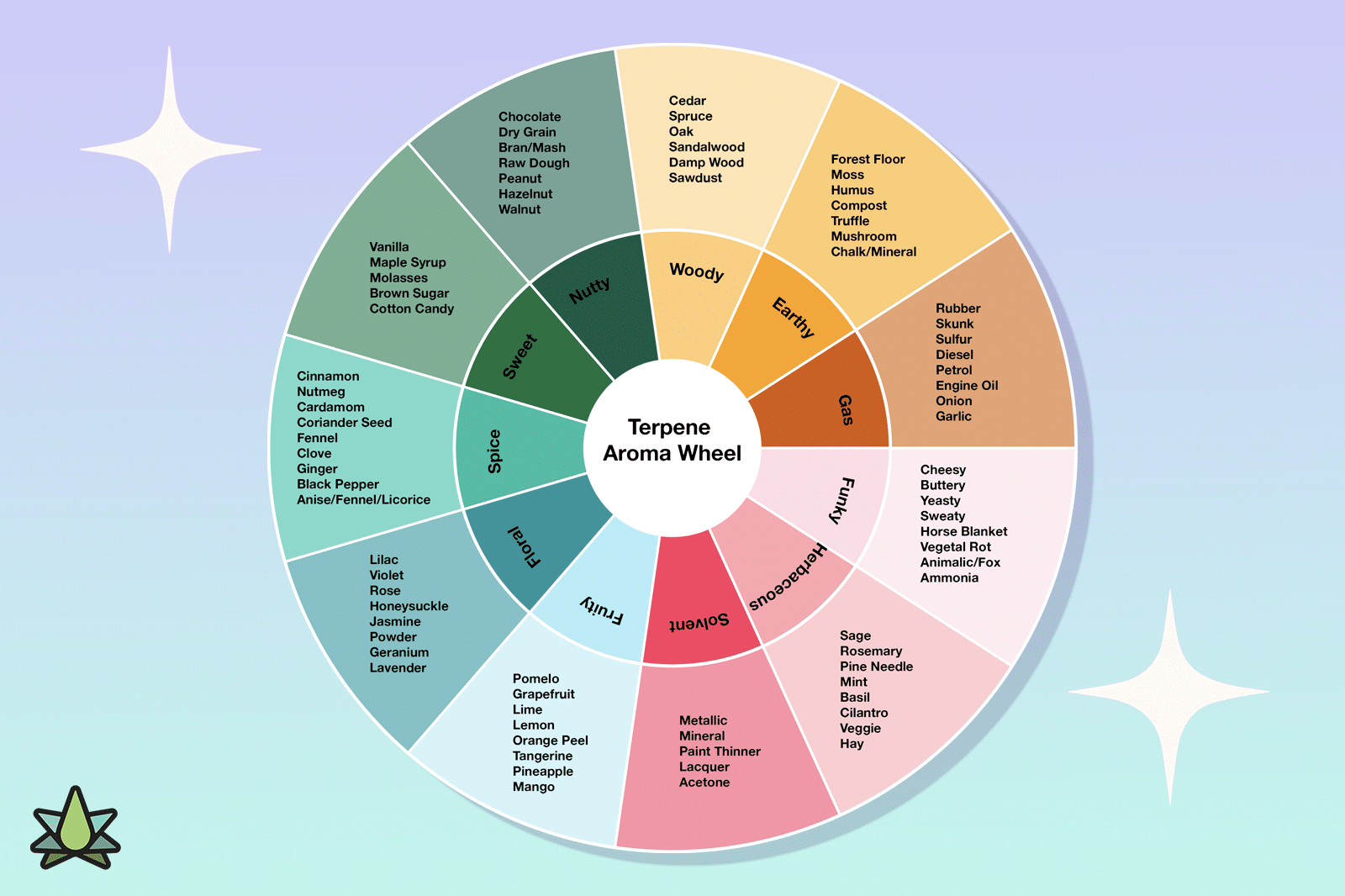This month, I set out to uncover the true state of affairs of the cannabis industry on the East Coast and in the Midwest.
My tour included events and in-market meetings with operators in eight cities: NYC, Newark, Philadelphia, Boston, Chicago, St. Louis, Columbia, and Kansas City (just writing this should get me extra frequent flier miles)! I got to be in a community with the colorful, vibrant, and complex underbelly of the US cannabis industry, venturing deep into the largest growth regions today.
I’ve spent some time unpacking my insights from each city visit, starting with NYC, Newark, and Philly. Read on below!
1. New York City
New York is where I’ve lived most of my adult life and have been a consumer throughout. In 2019, I co-founded a NY-based cannabis leadership community: a group of 35 founders and executives including license holders from each part of New York’s supply chain. I attended a community dinner where spirits were high but frustrations could be cut with a butter knife.
In the pursuit of launching the most equitable cannabis market in the country, we’re stifled by the slow-as-molasses rollout. We currently sit at just five open stores across the state — competing with ~1400 gray market dispensaries flagrantly selling out-of-state (mostly CA) cannabis products to unknowing customers, who believe that these dispensaries are legal since cannabis has been legal here for two years (possession up to 5oz and open public consumption). Here are some of the specific problems:
- There’s no money raised to support retail rollout: The state was supposed to raise $200M to support the rollout of the first 150 (now 300) retail license holders, which are reserved for applicants who have been incarcerated or their families. To date, there has been no money raised.
- Restrictions on investment dollars make matters worse: An investment rule called “True Party of Interest” (TPI) says that if an investor has invested in any cannabis company (across the globe), they can’t invest in a business in the New York market. This is making it very hard for new license holders to raise money in a climate where it’s already really hard to raise money.
- There’s too much supply and not enough sales outlets: New York’s supply-side license holders are converted NY hemp cultivators and processors, who had a rough go during the CBD boom and bust over the last handful of years. They were sold a story about how becoming cannabis farmers and manufacturers would be their way out of financial hardship. Well, so far, more than 250 farmers were allowed to grow cannabis last year and have had practically nowhere to sell it. They haven’t made any of their money back and have no way to reinvest in the new growing season (which is mostly outdoor, with a small handful of growers running greenhouse or mixed-light).
The slow rollout of retail has led to a mismatch of supply vs sales outlets. It’s the first time in the launch on an adult use market where there’s been oversupply this early, specifically because there aren’t enough stores to create a real market yet. The gray market steals billions per year in sales from soon-to-be-licensed retailers that should be opening their doors throughout the rest of 2023 and 2024.
2. Newark, NJ
The next day, a few team members and I attended a one-day conference in Newark called NJ Cannabis Insider Live. The conference was oversold (at about 300 people) and there were many more licensees there than I anticipated. There was a small but very active “floor” to walk, which included some of the existing medical operators, manufacturers and brands that are coming online soon, and your traditional ancillary businesses.
The New Jersey market is now over a year into adult-use becoming legalized.
Key takeaways:
- NJ is still dominated by original medical market operators: There were seven original license holders all required to be vertical — many of which hadn’t truly come online at scale until adult-use was on the horizon. So, you have some scaling operators all selling products to each other, and just now, we’re seeing the first of the adult-use retailers start to open their doors. Based on construction timelines and final local approvals, there should be handfuls opening every month throughout the rest of the year.
- Few localities are viable for retail storefronts (even less for cultivators and manufacturers): There’s been a slow rollout in NJ largely because 70% of the jurisdictions in the state have opted out of cannabis, leaving few localities that are viable for retail storefronts, let alone cultivators and manufacturers. On top of that, local approvals (as always) have continually slowed operators across the state, with murmurs of “you have to know someone” setting expectations.
- There’s little brand competition and product variation: The market is dominated by the original medical operators running house brands, and currently there are very few opportunities for few national brands that have found their way into the market. There isn’t a true wholesale distillate supply today, and while MSOs sell flower to each other, it’s mostly branded and there isn’t an excess of bulk flower to go around right now.
What’s really interesting is that New York and New Jersey — which share a border, waterways and a black market — are implementing the exact opposite approach to their regulated markets.
In New York, there are ten original medical operators, all of which are currently blocked from entering the state’s adult-use markets. This is because NY wants to reserve the market for local small-medium size businesses and prioritize those who have been harmed by the war on drugs, have been incarcerated or whose family members have been. (It’s an incredible idea, the execution not so much yet).
In New Jersey, many of the same national operators are NJ’s original medical operators, which all get first dibs on NJ’s adult-use market and a green light to convert their medical dispensaries to adult-use dispensaries. They’ve been given a 15-18 months head start over the rest of the new adult-use operators. Meanwhile, NY’s medical operators are frozen out of retail for three years, and it’s an unknown timeline before they can contribute to the wholesale products market.
3. Philadelphia, Pennsylvania
The next day I got up early and drove to the only medical-only state on my tour: PA. In Philly, I attended an event called Pennsylvania Cannabis ‒ 2023 and Beyond, hosted by The Pennsylvania Cannabis Coalition (PCC). This was the first in-person gathering of the state’s medical cannabis operators, as well as the first in-person gathering that the PCC had put on since the start of Covid. There were about 130 of us listening to a series of moderated panel discussions. Speakers ranged from executives at medical operators to state senators and state representatives who have been supporters of medical cannabis.
Key takeaways:
- PA is a quasi adult-use market: Here, you’re not required to be vertical, but you can be. Philadelphia (and the state at large) functions as a quasi adult-use market, very similar to how CA was before Prop 64. You can obtain a medical card without any trouble and there are handfuls of dispensaries in the city and in the surrounding suburbs. There are a number of MSOs who have gotten their start in PA (including Cresco, GTI and Pharmacann) and a number of in-state operators that are now MSOs (having either been acquired or have done the acquiring).
- Vapes are killing it: The market doesn’t allow pre-rolls but at least vapes are done right. Vapes have been a major point of contention since February 2022, when Vape Gate 2.0 was triggered by the PA Department of Health’s massive recall of all vapes containing non FDA approved ingredients. This became a lawsuit: medical operators sued the state under the guise that the basis for recall isn’t factually effective (the FDA doesn’t approve vape ingredients or manage inhalables, certainly not for cannabis!) The result has been a trend taken on by many east coast states: a marketplace and supply chain where only cannabis ingredients are allowed. Connecticut, New York, Rhode Island and Vermont also have bans on non-native cannabis ingredients, meaning no botanical or synthetic terpenes are allowed in those state’s supply chains.
- Governor Josh Shapiro released a budget that has adult-use cannabis tax revenue coming in starting January 2025: This is the only signal that state politicians need to start marching cannabis adult-use legalization through the bicameral legislative houses. There is pretty strong support in both houses for some version of a bill to pass (which does need to come through the legislature — there’s no ballot-measure in PA). So, the plan is to pass a cannabis legalization bill through both houses by the end of the legislative session leading into summer. This gives a year to create the future PA Cannabis Management Office and promulgate rules in an effort to have the market online in the next 18-20 months.
The state’s cannabis future definitely looks promising!
My trek on America’s terpene trail continues — stay tuned for insights from Boston, Chicago, and throughout Missouri.




